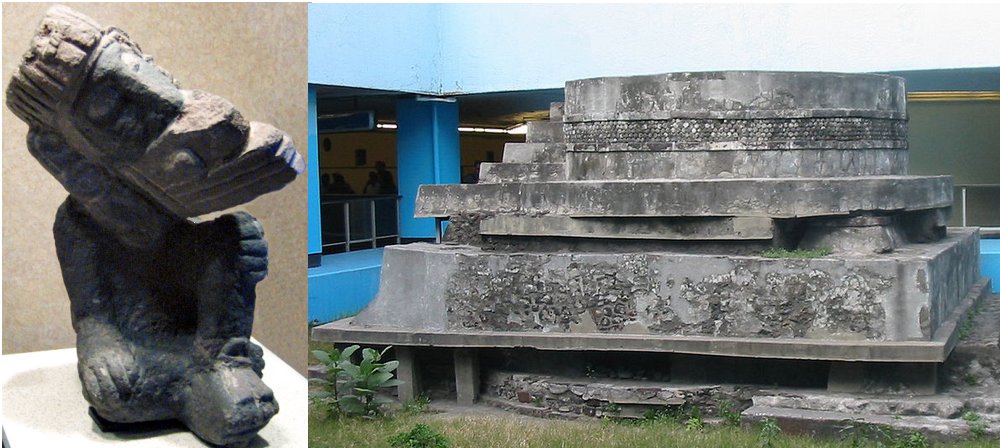Ehecatl: The Snake-Bird Deity And God Of Wind Feared And Respected By The Aztecs
A. Sutherland - AncientPages.com - Located in the Toluca Valley of highland central Mexico, Calixtlahuaca is one of the few Aztec-related urban sites, of which architecture and stone sculpture have survived until today.
Calixtlahuaca, a circular temple of Ehecatl, the Aztec god of wind. Image credit: INAH
Most of the settlement at Calixtlahuaca occupies the slopes of Cerro Tenismo, a small relict volcano. The Calixtlahuaca Aztec ruins near Toluca are scattered between the valley floor and the hill's summit.
The largest and best-known structure at Calixtlahuaca is a circular temple, where archaeologists discovered a life-sized stone sculpture of the Aztec god of wind, Ehecatl, which means 'Wind in Náhuatl.'
The Aztec codices confirm that Ehecatl was black with a conical head; he wore a red bird mask and shell jewelry, but his favorite piece of jewelry was a 'wind jewel' made of a conch shell.
Ehecatl was an important snake-bird deity (Quetzalcoatl) and god of air in the Aztecs' beliefs.
The Aztecs believed that the sound of the wind in the trees represented Ehecatl’s desire.
This deity symbolized fertility and human breath, which means this figure was closely associated with life force. The Aztecs believed that Ehecatl – by controlling all kinds of winds, even the strongest ones – could give life to Earth. Ehecatl's role was significant because he was credited with the creation of the present human race and the creation of the heavens.
One legend says that Ehecatl blew on the *sacrificial fire to stimulate the rising of the fifth sun and the fifth moon, the sun and moon of the present world, the fifth world. With such contributions, the Aztecs considered Ehecatl to be a creator god.
Left:Stone sculpture of Ehécatl, Wind God, National Museum of Anthropology, Mexico ; Right: Altar dedicated to the god Ehecatl, located in the middle of Metro Pino Suárez, Mexico City. Image credit: Thelmadatter - Public Domain
In Aztec myths and legends, Ehecatl plays an important role. One legend says that Ehecatl introduced sexual love to humankind; he once fell in love with Mayahuel, a maiden he brought from the Underworld. Their lovemaking caused a tree to grow.
The Aztecs believed that the sound of the wind in the trees represented Ehecatl's desire.
The Aztec codices confirm that Ehecatl was black with a conical head; he wore a red bird mask and shell jewelry, but his favorite piece of jewelry was a 'wind jewel' made of a conch shell.
Statue of Ehecatl-Quetzalcoatl, in the Brooklyn Museum (New York City). Life-Death Figure, 900-1250. (No restrictions)
The temples, which the Aztecs built to honor him, were circular-shaped with conical roofs to symbolize caves to the Underworld. According to one interpretation, a circle, which is endless and round, the temples' rounded corners may have represented the god Ehecatl's infinite powers.
One of the extraordinary finds made at the archaeological site of Calixtlahuaca during the XIX and XX centuries is a Romanesque figurine - a small terracotta head - unearthed in 1933 during the excavation of a burial offering in the Pre-Hispanic settlement of Tecaxic-Calixtlahuaca, located approximately forty miles NW of Mexico City.
It remains a mystery how it reached Caxtlahuaca, 40 km northeast of Mexico City. It is known the artifact is authentic and dates back to the 2nd century.
Written by – A. Sutherland AncientPages.com Senior Staff Writer
Updated on February 2, 2024
Copyright © AncientPages.com All rights reserved. This material may not be published, broadcast, rewritten or redistributed in whole or part without the express written permission of AncientPages.com
More From Ancient Pages
-
 USC Archeologist Discovers Maya Royal Burial Site
Archaeology | Jan 9, 2016
USC Archeologist Discovers Maya Royal Burial Site
Archaeology | Jan 9, 2016 -
 Copyright Violations By Earth-Chronicles.com – Fake Site That Steals Content From Ancient Pages Daily
News | Dec 28, 2017
Copyright Violations By Earth-Chronicles.com – Fake Site That Steals Content From Ancient Pages Daily
News | Dec 28, 2017 -
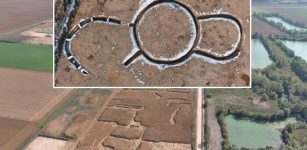 Mysterious Circular Neolithic Structure Used For Unknown Purpose Found In Marliens, France
Archaeology | Apr 16, 2024
Mysterious Circular Neolithic Structure Used For Unknown Purpose Found In Marliens, France
Archaeology | Apr 16, 2024 -
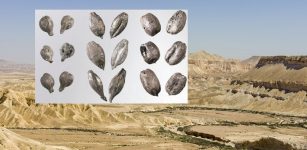 When And Why Negev Highlands’ Agricultural Settlement Was Abandoned? – Researchers Have Answers
Archaeology | Jul 28, 2020
When And Why Negev Highlands’ Agricultural Settlement Was Abandoned? – Researchers Have Answers
Archaeology | Jul 28, 2020 -
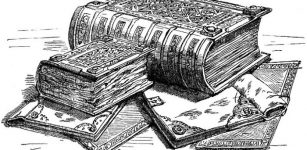 ‘The Domesday Book’ Of William I The Conqueror: Detailed Register Of ‘Who Owned What’ In England
Ancient History Facts | Jan 11, 2017
‘The Domesday Book’ Of William I The Conqueror: Detailed Register Of ‘Who Owned What’ In England
Ancient History Facts | Jan 11, 2017 -
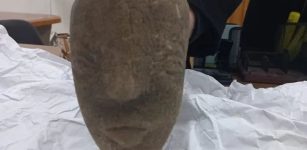 Rare 4,500-Year-Old Stone Sculpture Of Canaanite Goddess Anat Found By Farmer In Gaza Strip
Archaeology | Apr 26, 2022
Rare 4,500-Year-Old Stone Sculpture Of Canaanite Goddess Anat Found By Farmer In Gaza Strip
Archaeology | Apr 26, 2022 -
 A Graffiti Inscription With The Name Of Knight Adrian von Bubenberg – Found On Mount Zion In Jerusalem
Archaeology | Nov 30, 2022
A Graffiti Inscription With The Name Of Knight Adrian von Bubenberg – Found On Mount Zion In Jerusalem
Archaeology | Nov 30, 2022 -
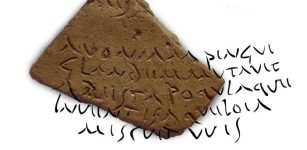 Incredible Discovery Of A Poem By Virgil On A Roman Oil Amphora
Archaeology | Jun 21, 2023
Incredible Discovery Of A Poem By Virgil On A Roman Oil Amphora
Archaeology | Jun 21, 2023 -
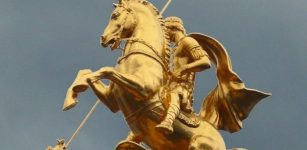 Saint George: Knight Warrior Who Refused To Denounce His Faith And Died A Martyrs Death
Featured Stories | Jun 3, 2019
Saint George: Knight Warrior Who Refused To Denounce His Faith And Died A Martyrs Death
Featured Stories | Jun 3, 2019 -
 On This Day In History: ‘Devil’s Footprints’ Appeared In Devon, England – Feb 8/9, 1855
News | Feb 8, 2017
On This Day In History: ‘Devil’s Footprints’ Appeared In Devon, England – Feb 8/9, 1855
News | Feb 8, 2017 -
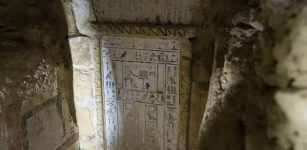 Archaeologists Have Discovered A Mummy Wrapped In Gold – Here’s What It Tells Us About Ancient Egyptian Beliefs
Featured Stories | Feb 7, 2023
Archaeologists Have Discovered A Mummy Wrapped In Gold – Here’s What It Tells Us About Ancient Egyptian Beliefs
Featured Stories | Feb 7, 2023 -
 On This Day In History: Battle of Devil’s Hole Was Fought – On Sep 14, 1763
News | Sep 14, 2016
On This Day In History: Battle of Devil’s Hole Was Fought – On Sep 14, 1763
News | Sep 14, 2016 -
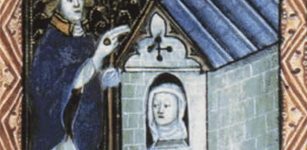 Coronavirus: Advice From The Middle Ages For How To Cope With Self-Isolation
Featured Stories | Mar 29, 2020
Coronavirus: Advice From The Middle Ages For How To Cope With Self-Isolation
Featured Stories | Mar 29, 2020 -
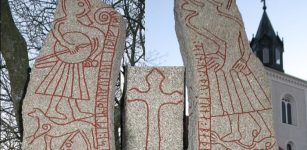 Ledberg Stone (Ledbergsstenen) With Magic Formula Dated To Viking-Era – One Of Most Beautiful Landmarks
Featured Stories | Jan 5, 2023
Ledberg Stone (Ledbergsstenen) With Magic Formula Dated To Viking-Era – One Of Most Beautiful Landmarks
Featured Stories | Jan 5, 2023 -
 Ancient Wooden Spade Found Under Melting Ice In Norway – Archaeologists Urge Hikers To Stay Alert
News | Sep 16, 2024
Ancient Wooden Spade Found Under Melting Ice In Norway – Archaeologists Urge Hikers To Stay Alert
News | Sep 16, 2024 -
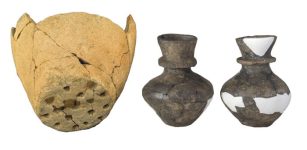 Neolithic Ceramics Reveal Dairy Processing From Milk Of Multiple Species
Archaeology | Mar 15, 2023
Neolithic Ceramics Reveal Dairy Processing From Milk Of Multiple Species
Archaeology | Mar 15, 2023 -
 Neanderthals Had Older Mothers And Younger Fathers Compared To Modern Humans
Archaeology | Apr 23, 2020
Neanderthals Had Older Mothers And Younger Fathers Compared To Modern Humans
Archaeology | Apr 23, 2020 -
 People With Neanderthals’ Pain-Related Gene May Suffer More On A Daily Basis
DNA | Jul 27, 2020
People With Neanderthals’ Pain-Related Gene May Suffer More On A Daily Basis
DNA | Jul 27, 2020 -
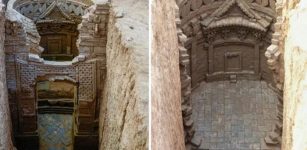 Incredible 700-Year-Old Tombs With Beautiful Decorations And Carved Bricks Found In Shandong, China
Archaeology | May 22, 2023
Incredible 700-Year-Old Tombs With Beautiful Decorations And Carved Bricks Found In Shandong, China
Archaeology | May 22, 2023 -
 Oldest Golden Jewel In The Caucasus Unearthed In Azerbaijan
Archaeology | Dec 25, 2017
Oldest Golden Jewel In The Caucasus Unearthed In Azerbaijan
Archaeology | Dec 25, 2017



